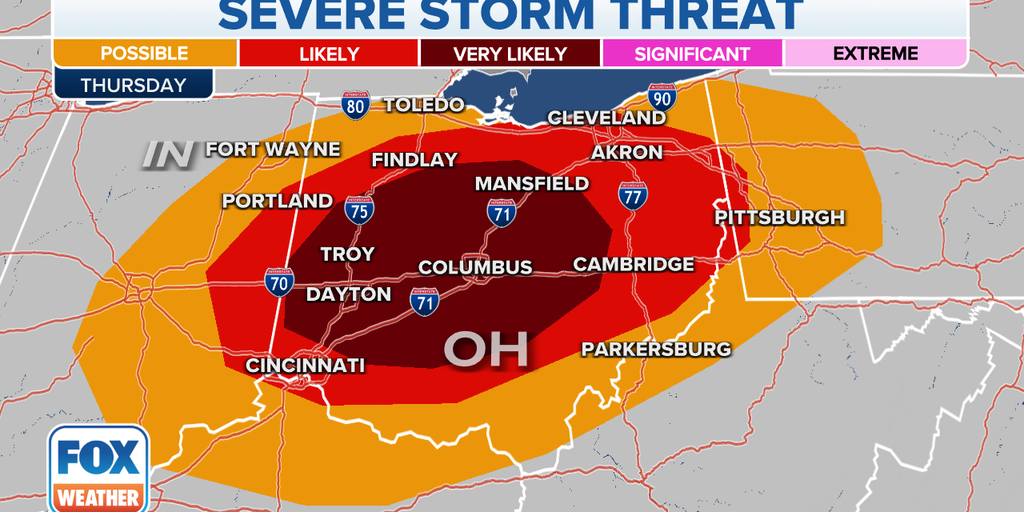Flood Warnings And Alerts: A Comprehensive Guide To Protecting Yourself

Table of Contents
Understanding Flood Warnings and Alerts
Different Levels of Warning
Knowing the difference between a flood watch, flood warning, and flood advisory is the first step in effective flood preparedness. These terms represent different levels of flood risk:
-
Flood Watch: Conditions are favorable for flooding. This means that heavy rainfall, rapid snowmelt, or other factors are increasing the potential for flooding in your area. Now is the time to monitor the situation closely, review your emergency plan, and prepare your home and family. A flood watch is a preemptive alert, urging you to be ready.
-
Flood Warning: Flooding is occurring or is imminent. This is a serious alert indicating that flooding is already happening or is about to begin. You must take immediate action to protect yourself and your property. A flood warning demands an immediate response.
-
Flood Advisory: Flooding is possible in specific areas. This less severe alert indicates a potential for localized flooding, often due to heavy rainfall or rising water levels. While not as urgent as a warning, you should still exercise caution and monitor the situation closely. A flood advisory requires increased awareness and vigilance.
Sources of Information
Receiving timely and accurate flood warnings and alerts is essential. Utilize multiple sources to ensure you're well-informed:
-
Sign up for emergency alerts on your phone through your local government or the National Weather Service (NWS). These alerts will directly notify you of impending threats.
-
Monitor local news and weather reports closely. Television, radio, and online news sources often provide up-to-date information about weather conditions and flood risks in your area.
-
Invest in a NOAA Weather Radio with specific alerts. This dedicated weather radio provides continuous broadcasts of weather information, including flood warnings and alerts, even during power outages.
-
Check for flood warnings on reliable weather websites and apps like the NWS website or popular weather applications. These platforms offer detailed forecasts, radar imagery, and up-to-the-minute alerts.
Preparing for a Flood
Creating a Flood Emergency Plan
Flood preparedness is key to minimizing the impact of a flood event. A comprehensive family emergency plan should include:
-
Designate a meeting place outside the flood zone. This is a crucial pre-arranged location where your family can reunite after evacuating.
-
Identify multiple evacuation routes. Knowing several ways to escape your home is important, as your primary route may be impassable during a flood.
-
Pack an emergency kit with essential supplies. This kit should include at least three days' worth of water, non-perishable food, medications, flashlights, batteries, first-aid supplies, and important documents.
-
Establish communication protocols with family members. Determine how you will contact each other during and after the flood, including an out-of-area contact person.
Protecting Your Property
Implementing flood mitigation strategies can significantly reduce the damage to your property:
-
Move valuable possessions to higher ground. Elevate furniture, appliances, and other important items to prevent them from being damaged by floodwaters.
-
Seal basement windows and doors. This can help to prevent water from entering your basement and causing significant damage.
-
Consider installing a sump pump. A sump pump can help remove excess water from your basement, reducing the risk of flooding.
-
Purchase flood insurance if available in your area. Flood insurance can help cover the costs of repairs and replacements after a flood event. This is often not covered by standard homeowner's insurance.
Responding to a Flood Warning
Immediate Actions
When a flood warning is issued, immediate action is crucial:
-
Evacuate immediately if instructed by authorities. Do not hesitate; your life is more important than your possessions.
-
Never drive through flooded areas. Flooded roads can be extremely dangerous, and even a small amount of water can sweep a car away.
-
Turn off gas, electricity, and water. This will help prevent further damage and reduce the risk of electrical shock or gas leaks.
-
Move to higher ground. Seek higher elevation to avoid the rising floodwaters.
Post-Flood Safety
After the floodwaters recede, returning home safely and assessing the damage requires caution:
-
Wait for authorities to declare the area safe. Do not enter a flooded area until authorities have deemed it safe to do so.
-
Wear protective gear when assessing damage. Floodwaters can be contaminated, so wear boots, gloves, and protective clothing when inspecting your property.
-
Document flood damage with photos and videos. This documentation is crucial for filing an insurance claim.
-
Contact your insurance company to report the damage and begin the claims process.
Conclusion
Staying informed about flood warnings and alerts is paramount for your safety and the safety of your community. By following the preparedness steps outlined in this guide, you can significantly reduce your risk and protect yourself from the devastating effects of flooding. Remember to regularly review your flood emergency plan and stay updated on the latest flood warnings and alerts in your area to ensure you are always prepared. Don't wait until it's too late – take action today and safeguard your family and property with a robust understanding of flood warnings and alerts.

Featured Posts
-
 Germanys Dax Soars Could Wall Streets Recovery Cast A Shadow
May 25, 2025
Germanys Dax Soars Could Wall Streets Recovery Cast A Shadow
May 25, 2025 -
 Flood Advisory Update Severe Storms Impacting Miami Valley
May 25, 2025
Flood Advisory Update Severe Storms Impacting Miami Valley
May 25, 2025 -
 Southern Vacation Destination Addresses Safety Concerns Following Shooting
May 25, 2025
Southern Vacation Destination Addresses Safety Concerns Following Shooting
May 25, 2025 -
 Sterke Resultaten Relx Ai De Sleutel Tot Succes In 2025
May 25, 2025
Sterke Resultaten Relx Ai De Sleutel Tot Succes In 2025
May 25, 2025 -
 Konchita Vurst Prorokuye Peremozhtsiv Yevrobachennya 2025 Prognoz Unian
May 25, 2025
Konchita Vurst Prorokuye Peremozhtsiv Yevrobachennya 2025 Prognoz Unian
May 25, 2025
Latest Posts
-
 F1 I Mercedes Allazei Stoxoys O Verstappen Ektos Sxedion
May 25, 2025
F1 I Mercedes Allazei Stoxoys O Verstappen Ektos Sxedion
May 25, 2025 -
 Mercedes I Allagi Stratigikis Gia Tin Epomeni Sezon Tis F1
May 25, 2025
Mercedes I Allagi Stratigikis Gia Tin Epomeni Sezon Tis F1
May 25, 2025 -
 O Verstappen Den Einai Pleon Proteraiotita Gia Ti Mercedes
May 25, 2025
O Verstappen Den Einai Pleon Proteraiotita Gia Ti Mercedes
May 25, 2025 -
 Rising Tennis Culture In China Impact Of Top International Players
May 25, 2025
Rising Tennis Culture In China Impact Of Top International Players
May 25, 2025 -
 I Mercedes Kai I Pithanotita Apoktisis Toy Verstappen
May 25, 2025
I Mercedes Kai I Pithanotita Apoktisis Toy Verstappen
May 25, 2025
